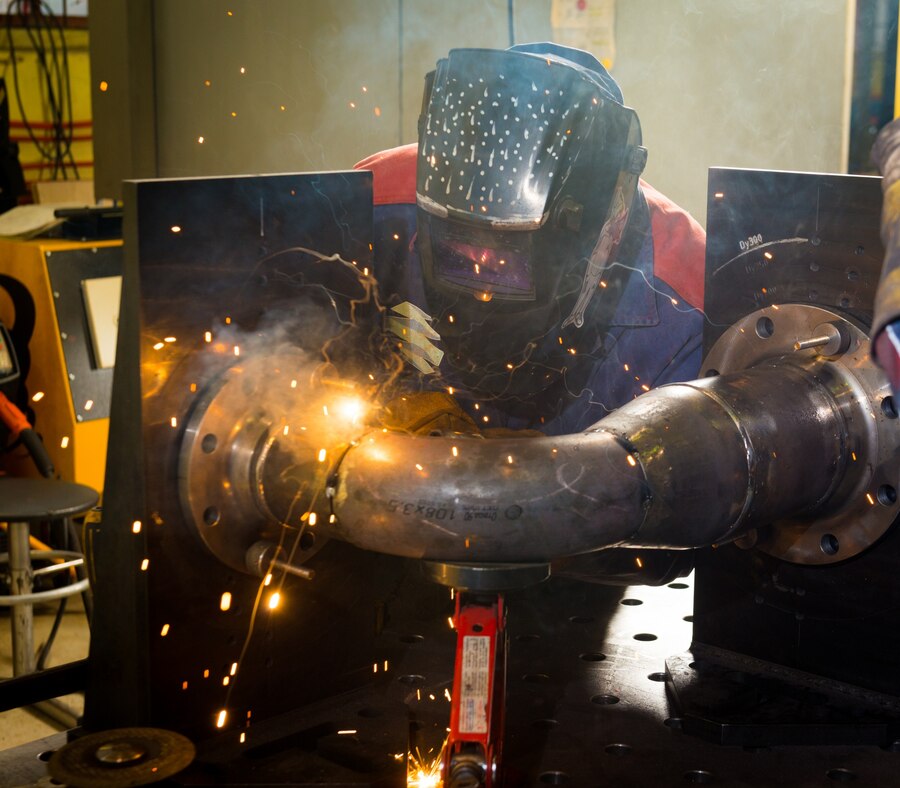In the world of workwear design, 3D prototyping is rapidly transforming the way manufacturers approach the creation of functional, innovative, and stylish work clothing. This technology is allowing designers to push the boundaries of what’s possible in workwear, all while improving efficiency, fit, and customization. Let’s dive into the exciting developments surrounding 3D prototyping in workwear manufacturing and how it’s changing the industry.
1. Streamlining the Design Process with 3D Modeling
Traditionally, workwear design involved multiple rounds of sketching, physical prototyping, and adjustments. This process could take weeks or even months, leading to delays and costly iterations. With the introduction of 3D modeling, designers can now create digital prototypes of workwear that mimic the fit, feel, and function of the final garment. This allows them to experiment with different materials, styles, and features in a matter of days. The beauty of 3D prototyping is that changes can be made instantly, leading to quicker turnarounds and faster time-to-market for new workwear designs.
2. Enhanced Customization and Fit
One of the biggest challenges in the workwear industry has always been ensuring that garments fit a wide variety of body types. With 3D prototyping, manufacturers can now create tailored workwear that provides a perfect fit for each individual. This technology allows for the creation of customized sizing based on specific measurements, allowing workers to experience both comfort and functionality in their clothing. The prototype can be adjusted digitally for things like inseam length, waist circumference, and even movement patterns to ensure that the final garment meets the unique needs of each worker.
Additionally, with the ability to simulate wear and movement, designers can see how the workwear behaves in action before it’s ever physically produced. This reduces the risk of uncomfortable or impractical designs being brought to market.
3. Accelerating Product Testing and Refinement
Before 3D prototyping, designers had to rely on physical samples for product testing, which could be both time-consuming and expensive. With 3D prototyping, designers can now perform virtual wear tests, examining how the garment performs under different conditions, such as stress, stretch, and wear-and-tear, before committing to physical production. This helps identify potential issues early in the design process, leading to more durable, long-lasting workwear.
Moreover, testing can extend to ergonomics, breathability, and even flexibility in real-world environments. For example, if a worker needs to move easily in tight spaces or perform heavy lifting, the 3D model can be tested digitally for mobility and comfort, ensuring the final garment supports the wearer’s movements without restriction.
4. Sustainability in Design
The sustainability aspect of 3D prototyping is perhaps one of the most game-changing developments in the workwear industry. Traditional prototyping often involves excess material waste as multiple physical samples are made, only to be discarded or recycled. In contrast, 3D prototyping allows for a zero-waste process—designers can work with virtual samples, making alterations without creating any physical waste. This reduces the environmental impact and ensures that the final product is made from materials that are carefully selected to meet sustainability goals.
Additionally, 3D modeling allows designers to experiment with eco-friendly fabrics and see how they will perform before manufacturing, reducing the risk of using subpar or unsustainable materials.
5. Faster Prototyping with 3D Printing
Incorporating 3D printing into workwear design has been a revolutionary development. Manufacturers can now create physical prototypes of their designs much faster and with more precision than traditional methods. 3D printing allows for the production of parts or whole garments (such as protective pads, reinforced sections, or pockets) in low quantities, allowing designers to test real-world functionality without large-scale production. For example, a 3D printed reinforced knee pad can be quickly tested for its impact resistance and comfort, ensuring it’s the best design before moving to full-scale manufacturing.
This speed in prototyping leads to faster innovation cycles and allows brands to bring new designs to market with incredible efficiency, staying competitive in the ever-evolving workwear industry.
6. Collaborative Design Process
Another exciting aspect of 3D prototyping is its ability to enable collaborative design. Designers, engineers, and manufacturers can now work together in real-time on a digital platform, tweaking designs, making suggestions, and instantly seeing the changes reflected in the 3D model. This opens up more room for creativity and innovation, as everyone involved can contribute to the process. Moreover, feedback from end-users can be integrated at any stage—whether it’s safety officers, workers in the field, or ergonomics experts—ensuring that the final workwear meets every necessary requirement.
7. Incorporating Advanced Functionality into Workwear
Workwear isn’t just about protection anymore. It’s also about enhancing the worker’s performance. With 3D prototyping, designers can incorporate cutting-edge features such as motion sensors, lightweight reinforcement, and even heat regulation fabrics directly into the garment design. Testing these features digitally, before they ever make it to the production line, ensures that the technology seamlessly integrates with the garment, enhancing functionality without compromising on comfort or safety.
Conclusion: The Future of Workwear is 3D
As the workwear industry embraces 3D prototyping, the future looks brighter than ever. From faster design iterations to tailored fits, sustainable materials, and advanced features, this innovative technology is making workwear smarter, more functional, and better suited to the demands of modern workers. Whether you’re looking to improve worker comfort, enhance performance, or reduce your environmental footprint, 3D prototyping offers a way forward for the workwear industry to create more effective, cutting-edge solutions.






